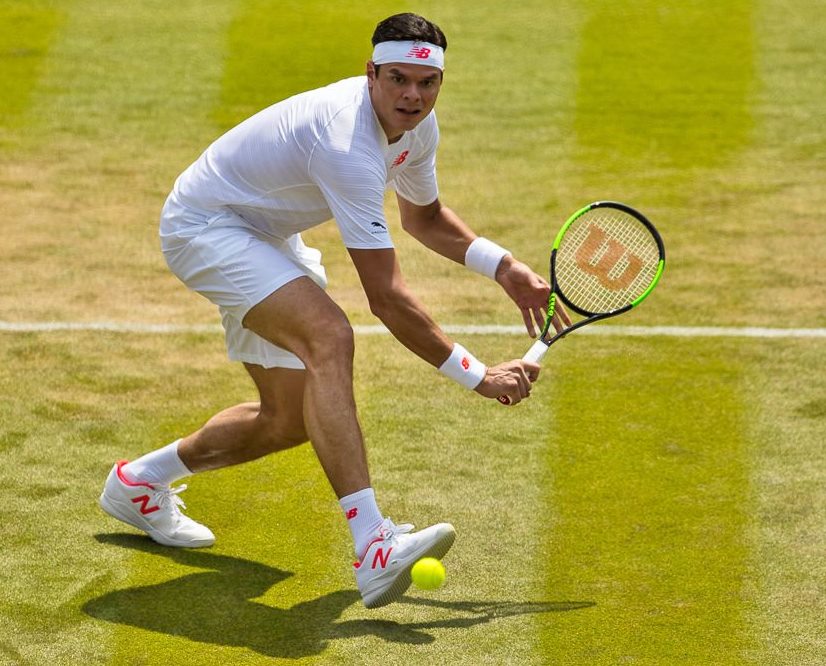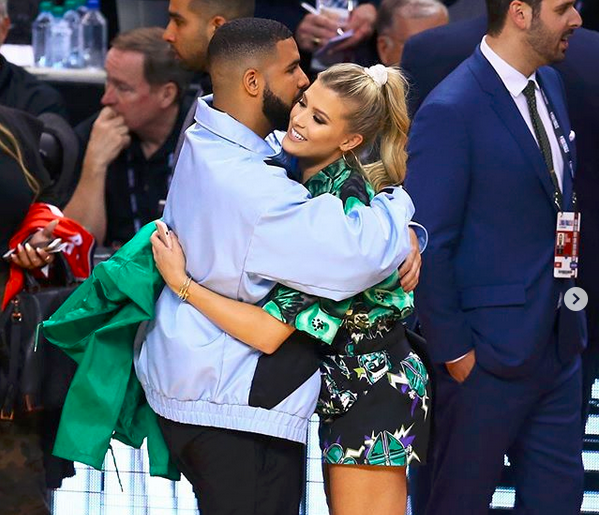
|Tennis TV||TennisTV.com|TennisTV.com|TennisTV.com| Mauricio Paiz| Mauricio Paiz| Mauricio Paiz|||TennisTV.com
You just don’t show up for the first time and win Wimbledon – it doesn’t happen that way.
Grass is the least common surface on the pro tour and even the best players need to serve an apprenticeship on it before tasting success.
The three most successful men on grass since the advent of ‘open tennis’ in 1968 have been Bjorn Borg of Sweden, a five-time winner, Pete Sampras of the U.S., a seven-time winner, and Swiss great Roger Federer, an eight-time champion.
Borg played Wimbledon three times before his breakthrough in 1976. And that breakthrough may well have been the result of a fortuitous loss at the French Open a few weeks earlier. The year 1976 was the last one when there was only a single week between Roland Garros and Wimbledon – it was two weeks from 1977 until 2015 when it expanded to three weeks – and the two-time defending French Open champion was upset in the quarter-finals in Paris. So Borg had almost an extra week to prepare on grass for Wimbledon. The story goes that he and his coach Lennart Bergelin worked on the positioning of his feet on his serve, which improved it, and that was key to 1976 being the first of five Wimbledon titles in a row for the then-20-year-old Swede.
Sampras broke through on the hard courts at the US Open by winning the 1990 US Open at 19 but needed until 1993 to win Wimbledon on his fifth try – a month away from his 22nd birthday.

Federer, a month from his 22nd birthday, finally won Wimbledon in 2003 on his fifth attempt at the All England Club after having been the junior champion in 1998.
Of the multiple winners of Wimbledon since 1968, only 17-year-old Boris Becker in 1985 won the title after just one previous experience. At the French Open by contrast, there have been two multiple winners who won the Coupe des Mousquetaires on their first try – Swede Mats Wilander at 17 in 1982 and Rafael Nadal at 19 in 2005. The gangly Gustavo Kuerten of Brazil triumphed at Roland Garros on his second attempt at 20 (ranked No. 66) in 1997 after losing in the first round the previous year.Here are the other multiple Wimbledon champions since 1968 and how many years they played (in brackets) at the All England Club before winning the title: Rod Laver (4), John Newcombe (6), Jimmy Connors (2), John McEnroe (4), Stefan Edberg (4), Nadal (4) and Novak Djokovic (6).
There are lessons to learn on grass – a trust in striking a low, skidding ball on a sometimes-untrue bounce, as well as an understanding of how to play tactically.
The uncertainty of the bounce is something players have to come to terms with. A few years ago a group of Americans in the draw were discussing the subject before Wimbledon and talked about how important it was to still hit their normal ground strokes and not get tentative, concerned about making a last-second adjustment because of a bad bounce.
Andre Agassi, champion in 1992, sometimes went out and hit on a hard court during Wimbledon. His rationale was that he wanted to get back into the groove of his ground strokes by hitting on a court with a consistently true bounce.
Once a player feels comfortable and gets the ‘knack’ on grass, it has become more and more obvious – with the exception of Nadal’s incredible 12 titles at Roland Garros – that it’s the Grand Slam surface that’s the easiest to dominate as Borg, Sampras and Federer have demonstrated.

Historically, the women have not been as surface specific as the men, with the top players generally being capable of winning on all the different surfaces. That was confirmed again this year with Ashleigh Barty’s victory on the red clay at Roland Garros. Regarded as being at her best on hard courts and grass, she won the 2019 French Open after going just 2-5 in her previous appearances in Paris.

Closer to home, Milos Raonic needed three second-round losses at Wimbledon – although the first in 2011, when he slipped and injured his right hip, doesn’t really count – before he made it to the semi-finals in 2014 and the final two years later.
Denis Shapovalov, 20, will be taking his third shot at Wimbledon in two weeks. He was the junior champion in 2016 but in the main draw he has lost to Jerzy Janowicz of Poland in the 2017 first round and then to Benoit Paire in the second round last year after beating Paire’s French compatriot Jeremy Chardy in the first round.
Félix Auger-Aliassime’s last time on the Wimbledon lawns was at 15 when he lost 5-7, 7-6(5), 6-2 in the quarter-finals of the 2016 junior boys event to Alex de Minaur (his doubles partner this week at Queen’s Club). The Aussie, 17, went on to lose 4-6, 6-1, 6-3 to a 17-year-old Shapovalov in the final. An example of the superior talent on display in the juniors that year – Shapovalov beat 17-year-old Stefanos Tsitsipas 4-6, 7-6(5) 6-2 in a high-quality semi-final.
Auger-Aliassime, 18, and Shapovalov both have games that suit grass and the potential to win Wimbledon some day. Now that there’s a firmer base to the Wimbledon grass courts, creating a higher bounce, the adjustment to the surface has become easier. But still, like the multiple champions mentioned here, it will likely take Auger-Aliassime and Shapovalov at least a few years on Wimbledon’s rye grass before they can truly master lawn tennis, and maybe some day even be able to hold up that gilded Challenge Cup trophy at the end of the greatest fortnight in the sport.

FELIX IN STUTTGART

Félix Auger-Aliassime played his first professional tournament on grass last week in Stuttgart and reached the final where he lost to a red-hot – 50 service holds from start to finish in the tournament – Matteo Berrettini. He defeated Ernests Gulbis, Gilles Simon and Dustin Brown (saving a match point) in his first three rounds and looked remarkably comfortable on the grass.
His 6-4, 7-6(11) loss to No. 30-ranked Berrettini in the final was tough to swallow. The 6-foot-5 Italian was in control in the first set but the second set was highly competitive. In the eventual tiebreak, it looked as if Auger-Aliassime had struck an ace on set point leading 6-5. There was a hesitation and then the electronic line call review (see below) showed the serve to be out by a miniscule margin.

At 7-6 – a third set point – Auger-Aliassime hit deep and had Berrettini in a difficult position. The ball was called out but over-ruled as good by umpire Carlos Bernardes and the point replayed. Berrettini then proceeded to hit a service winner and Auger-Aliassime’s second excellent chance to wrap up the set had vanished.
Eventually, after five set points against him, Berrettini won the tiebreak on his third match point when Auger-Aliassime misfired a backhand into the net.

Auger-Aliassime was obviously disappointed, especially because it was his second chance in three weeks (Benoit Paire in the Lyon final on May 25th) to win his first ATP title. But he deserves credit for the way he handled those two tough breaks in the tiebreak against Berrettini. He didn’t hang his head or complain – he simply played the rest of the tiebreak with a professionalism well beyond his 18 years.
“Four years ago I got my first ATP (ranking) point,” the 23-year-old Berrettini later joked about his precocious 18-year-old opponent. “He’s doing unbelievable and he’s top 20. For sure he’s going to come back and win some more important titles.”
Auger-Aliassime was defending 90 points from winning a Challenger event in Lyon, France, a year ago, so the 150 points he earned as the Stuttgart runner-up served to consolidate his current No. 21 ranking position.

In the Stuttgart doubles final, Denis Shapovalov and his Indian partner Rohan Bopanna were beaten 7-5, 6-3 by the top seeds John Peers of Australia and Bruno Soares of Brazil.
It gave Shapovalov some good match practice after he lost 7-5, 6-4 to Jan-Lennard Struff of Germany in the first round of singles.
This week at the Queen’s Club ATP 500 event in London, Shapovalov has drawn third-seeded Juan Martin del Potro for a first-round match on a rainy Tuesday in London. It will be their third match-up – Shapovalov winning in the second round of the Rogers Cup in Montreal two years ago with the 30-year-old Argentine avenging that loss in Auckland, New Zealand at the beginning of 2018.

As for Auger-Aliassime – above are his sister Malika, physio Nicolas Perrotte and coach Fred Fontang – on Tuesday he’s scheduled to play Grigor Dimitrov, the 2014 Queen’s Club champion who has struggled this year, partly because of a shoulder issue. The 28-year-old Bulgarian currently ranks No. 45.
Milos Raonic, who had to pull out of his semi-final with Auger-Aliassime in Stuttgart on Saturday with a lower-back injury, is seeded No. 6 at Queen’s Club and faces Marco Cecchinato in the first round Tuesday. Raonic has a 3-0 record against the No. 40-ranked Italian – with all three wins coming on clay.
On the women’s side, Canadian No. 1 Bianca Andreescu has withdrawn from next week’s WTA grass-court event in Eastbourne. That would make it unlikely she will play Wimbledon the following week. She returned after nine weeks out of action for the recent French Open without a warm-up event and re-injured her right shoulder in her first match. With that in mind, it’s doubtful she would try to play as big a tournament as Wimbledon without a prep event. As for Genie Bouchard, now ranked No. 78, her plan all along has been to only play next week’s WTA event in Eastbourne before Wimbledon.
GENIE AND DRAKE

Bouchard got in on Raptors-mania as the Toronto team went on a spectacular run and won the 2019 NBA championship. Here she is at a game at Scotiabank Arena last week with Raptors fan and superstar musician Drake.
LUCIE THANKS ROB

Lucie Safarova, the 32-year-old Czech who retired after the French Open, had an impressive career that saw her rank No. 5 in singles, win seven singles titles and be runner-up at the 2015 French Open as well as rank No. 1 in doubles and win five Grand Slam doubles titles.
Rob Steckley of Toronto coached Safarova during the most successful years of her career – so it was nice to see her Instagram post last week with the picture above and the following words:
Guess who deserves special piece in my story? @robsteckley ..He was not only a coach with who I had my best tennis memories but he is like a family to me! He is somewhat crazy and the most funny person I met..we had countless laughs together on and off the court! He has a great eye and knowledge as a coach and has the ability to make the everyday hard drill fun and enjoyable! Many people think a coach should be serious but he proofs that coach can be serious when needed and also fun and crazy! We came a long way together and it wasn’t always easy but we managed to get through it all and achieved our goals with a smile on the face! We had the trust in each other and we had each others back! Thats #teamsafi!!


